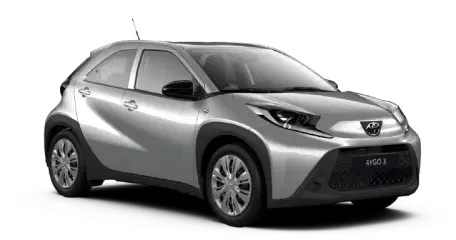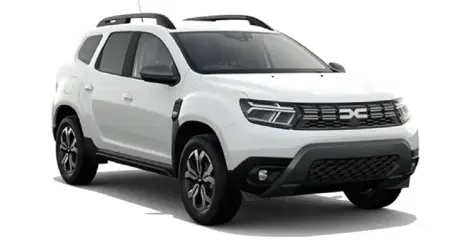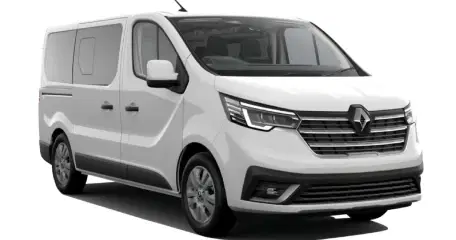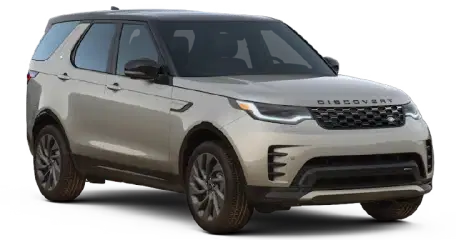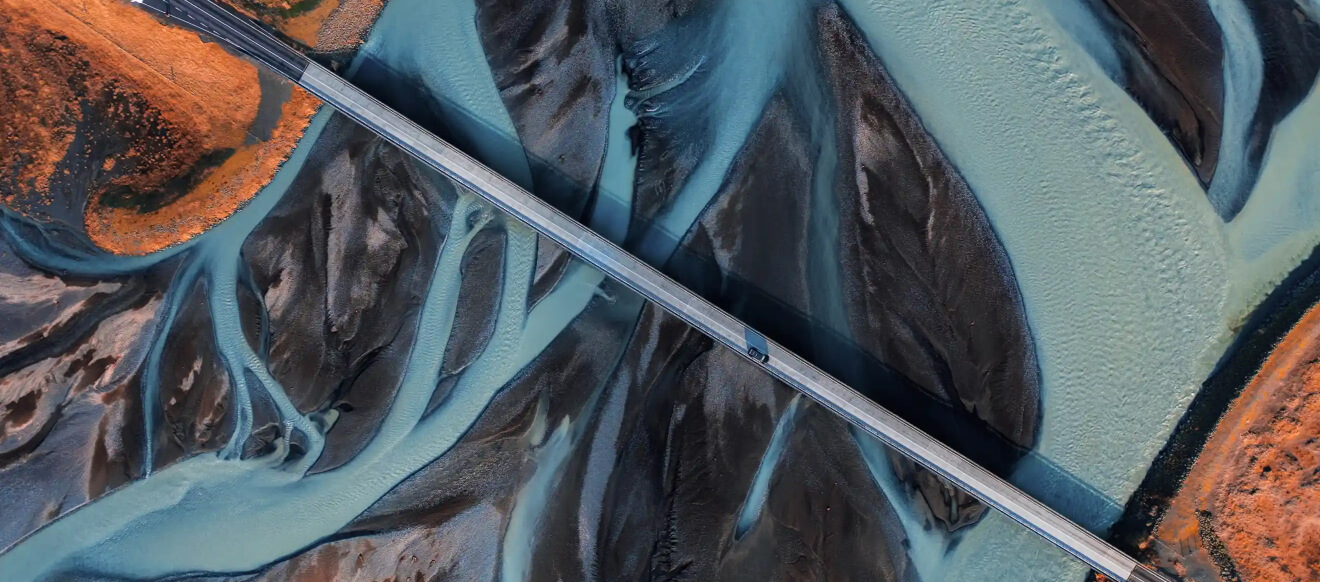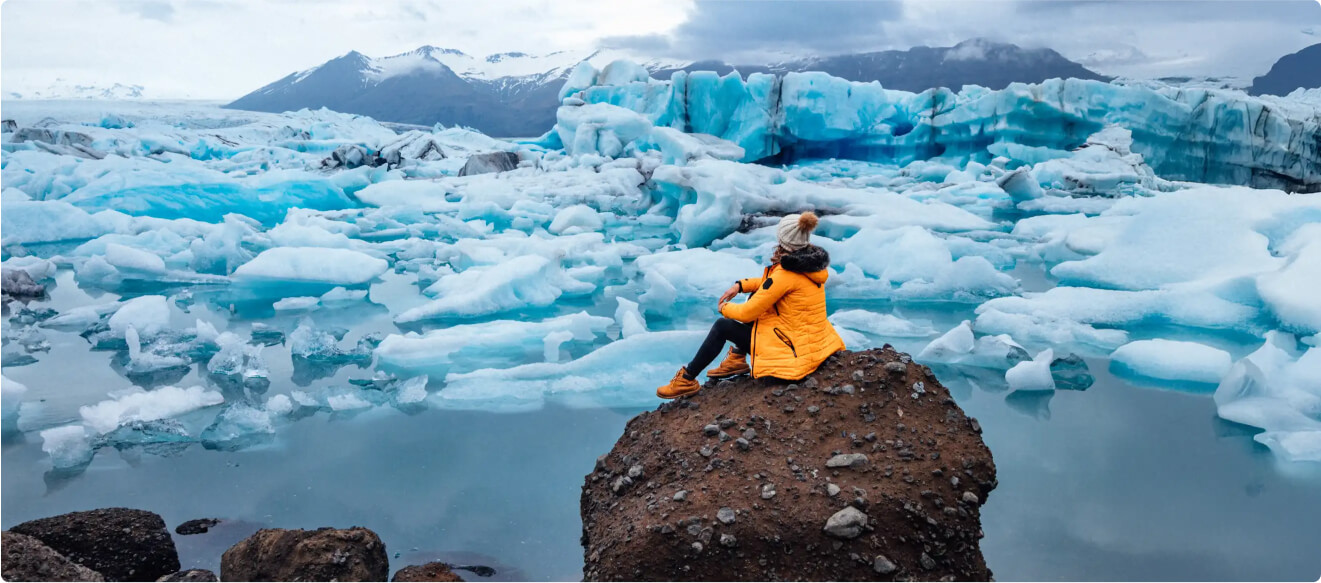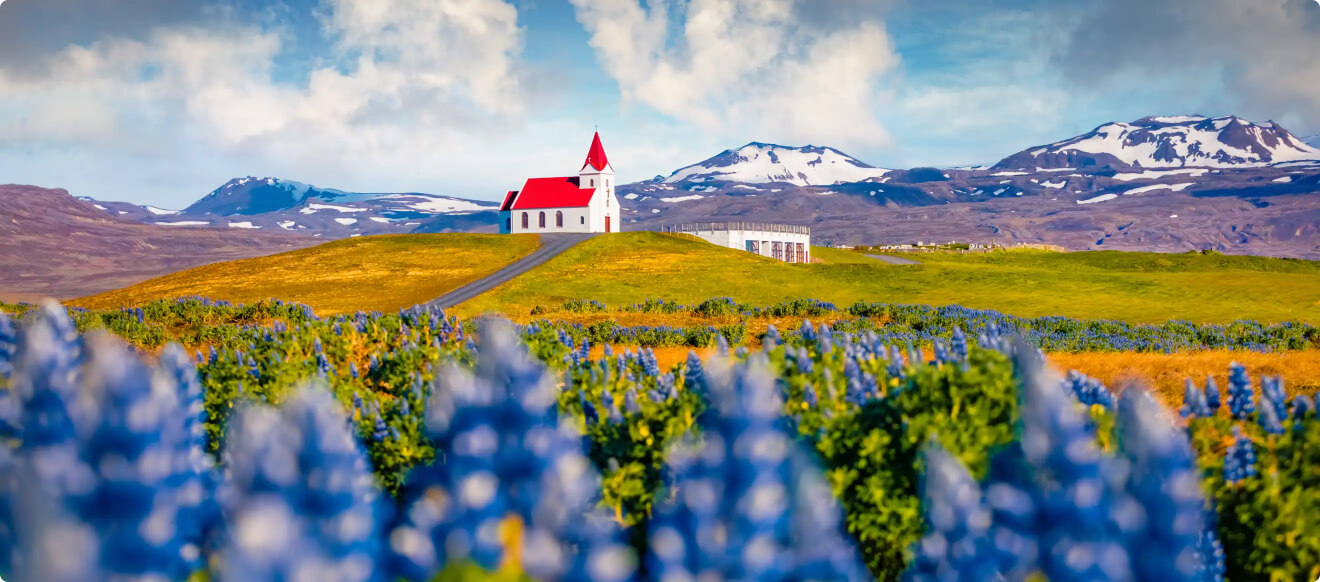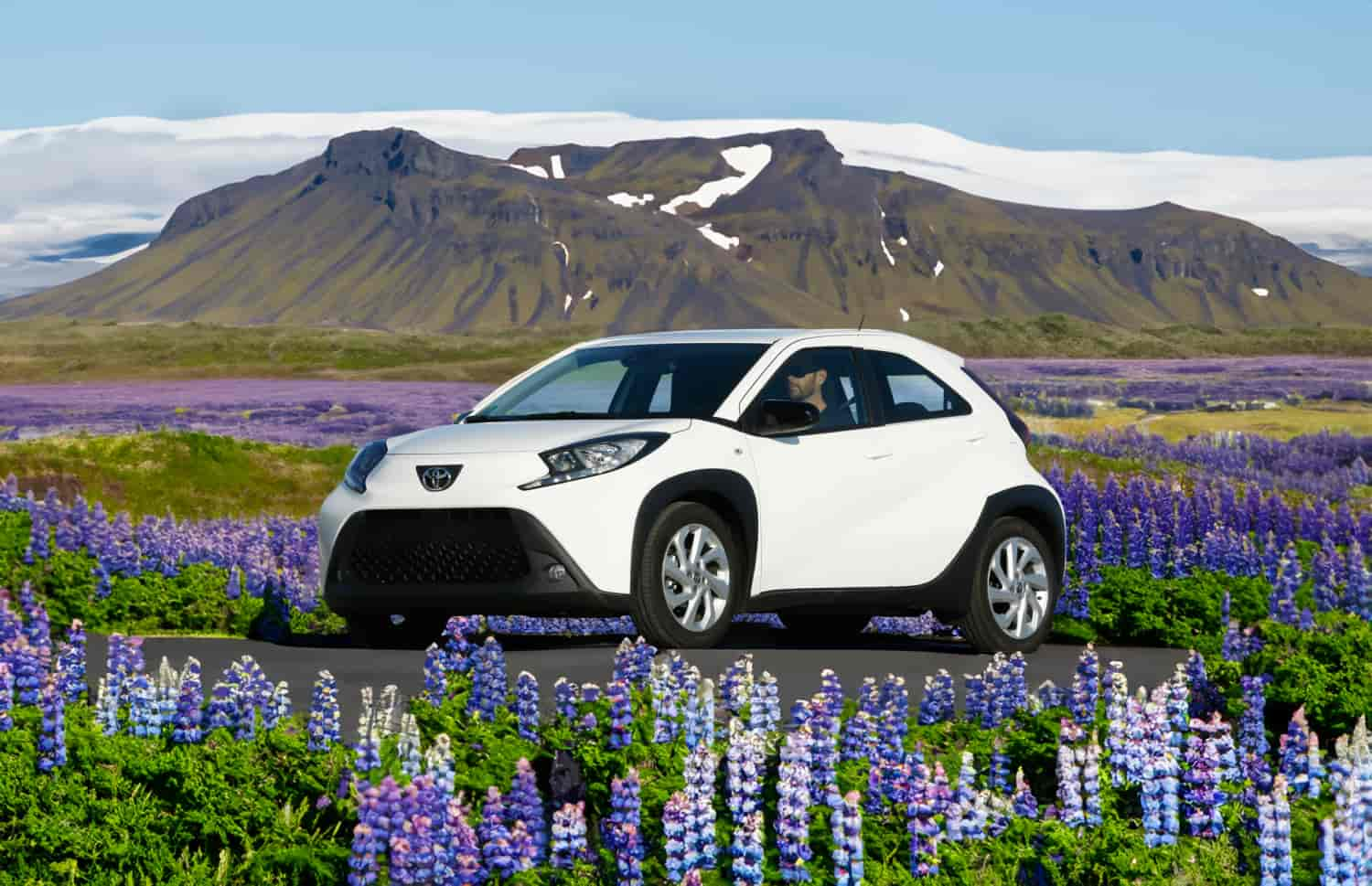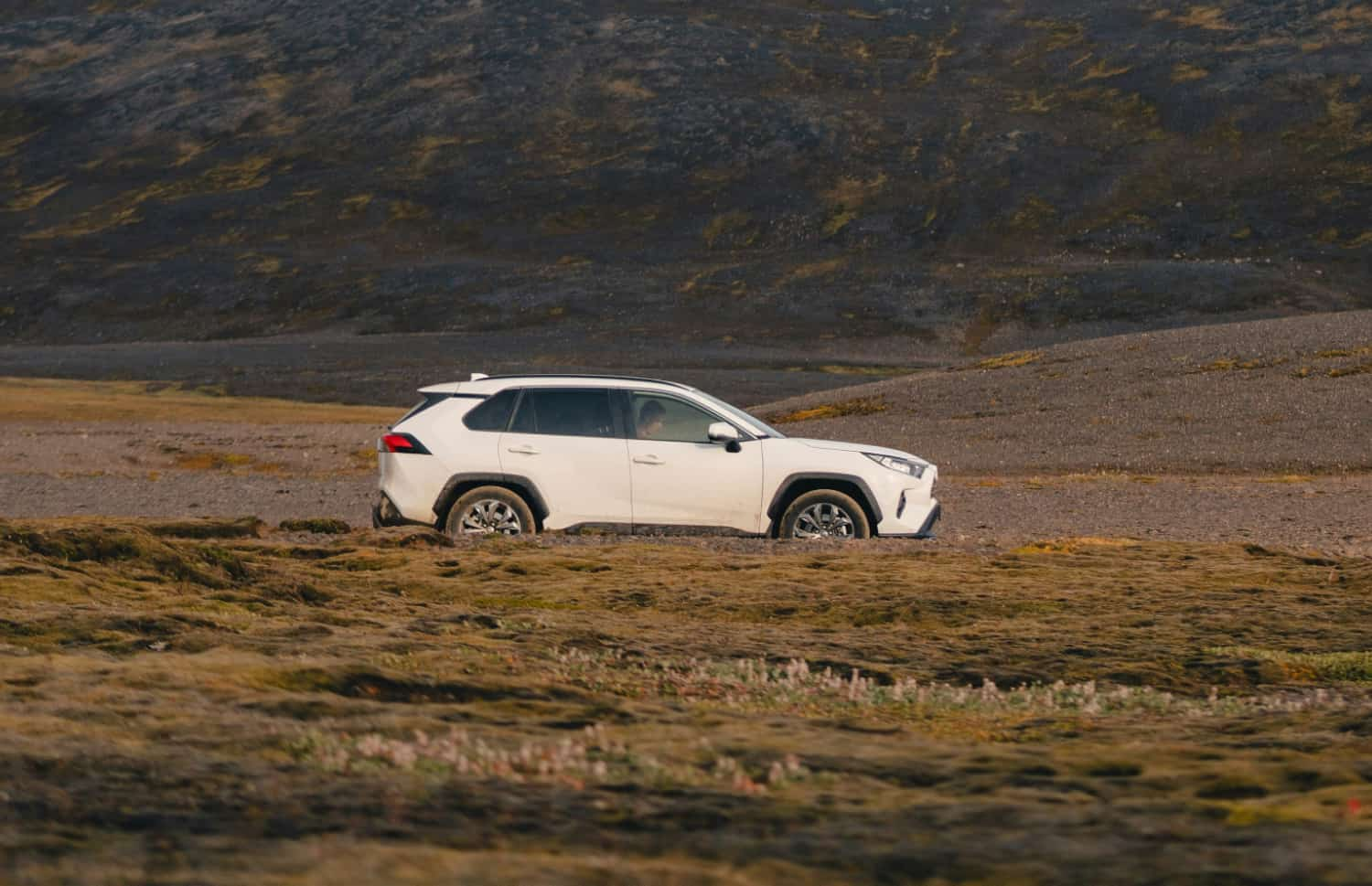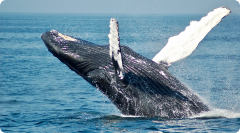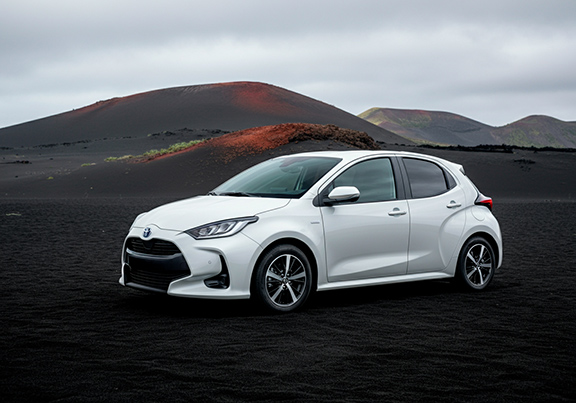The Northern Lights in Iceland are an amazing display of cosmic powers interacting with the earth. Getting a good look at it requires some planning and, in some cases, a short hunt for the right spot. Make sure to set up your camera right to catch it; otherwise, you might end up with a blurry photo of some green stripes on a black background.
We are no longer looking up at the stars, wondering why heaven suddenly started to silently burn bright in various colors in the middle of the night. Science and astronomy have progressed immensely since the days of making up stories about the stars. Despite this, not many people know what the Northern Lights in Iceland really are. Well, we’re going to tell you what it is, when and where to find it, and how to capture it, so stay tuned.
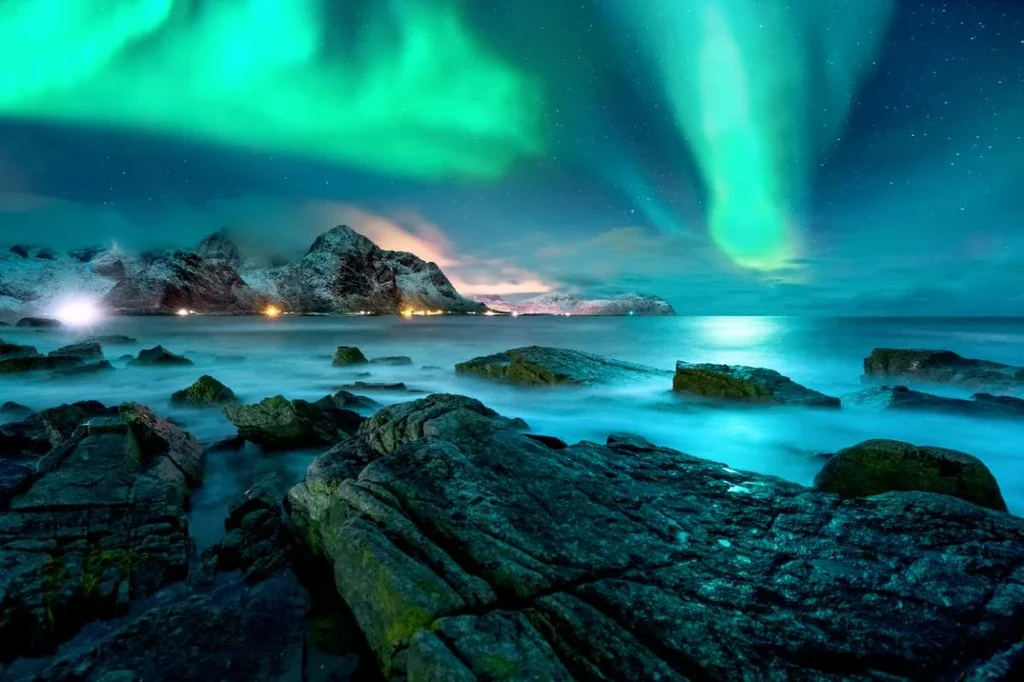
What the Northern Lights are
Seeing the Northern Lights in Iceland is one of the best things to do in Iceland. Looking up at this light display, it’s easy to simply admire it and wonder “What causes the Northern Lights in Iceland?”. Well, here’s the answer:
Roughly 150 million kilometers away from us, there is an unfathomably large nuclear reactor that showers our galaxy with light and energy. To be less dramatic: the sun. From time to time, an extra strong wave of energy shoots out of the sun and hits the earth’s magnetic field.
When this wave hits the magnetic field, most of the energy “bounces off” the magnetic field and goes back out into space, but some of it stays for a while. This energy interacts with all the gases in our atmosphere and gives them the energy to emit light.
It works very similarly to those neon signs: a gas is trapped in a vacuum and gets fed by electricity (energy) and starts to glow. Different gases have different reactions and give different colors. That is why we can see so many different nuances and colors in the night sky during the Northern Lights phenomenon in Iceland.
The sun isn’t always shooting out these waves, so that’s why it’s hard to answer questions like “how often can you see the Northern Lights in Iceland?”.
So, to sum it up:
- The sun shoots out a wave of extra strong energy
- The earth’s magnetic field keeps some of it in the atmosphere for a bit
- This energizes the molecules in the atmosphere and lights it up like a neon sign
- We can marvel at a cosmic display and get amazing pictures and videos
We would like to extend a big thanks to the sun for going through the trouble of giving us some extra energy. And, of course, for providing us with an extraordinary display!
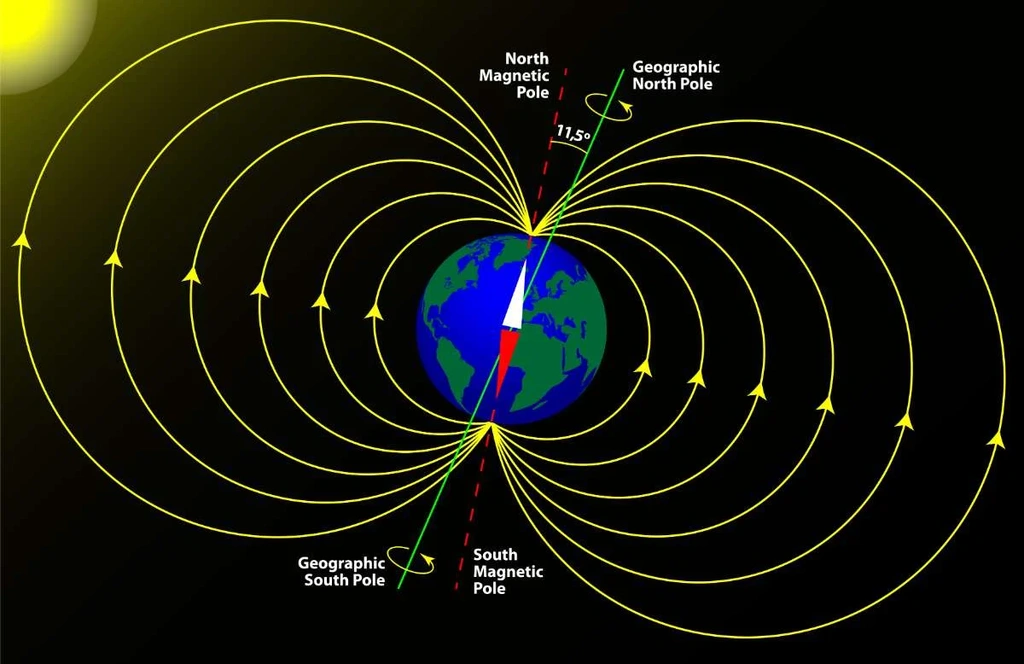
Where Can You See the Northern Lights?
The Northern Lights, or Aurora Borealis, in Iceland, can only be seen in the north above the 60°line. In the south, people can see the southern lights, or Aurora Australis, below the southern 60°line.
The reason why you can see the Northern Lights in Iceland is that the magnetic fields go “into” the earth around those spots. So, more energy is coming through in these areas. The same applies to Southern lights in the south. That is why this volcanic island is a perfect spot for a Northern Lights holiday in Iceland.
Where to Go in Iceland to See the Northern Lights
To be completely open and honest with that question, you could spot the Northern Lights in Iceland pretty much anywhere. As long as you have access to a dark night sky, of course. There are many popular spots where it’s easier to spot the Northern Lights.
In general, you want to be in a spot where there is as little light pollution as possible. So, you will need to get outside the major cities and settlements. That means that the Northern Lights in Reykjavík in Iceland is going to be a tough cookie to crumble, but not impossible.
You see, the Northern Lights in Iceland can be exceptionally strong. From time to time, it shines bright enough to battle the city’s light pollution and give you a proper display. This means that you will see the lights less frequently in the city and it’s not a very good tactic how to see the Northern Lights in Iceland.
Regardless, Reykjavík is a good option regarding where to stay in Iceland to see the Northern Lights. All you have to do is follow the official weather website and go to the Aurora forecast to see where you will have a good chance of spotting the Northern Lights.
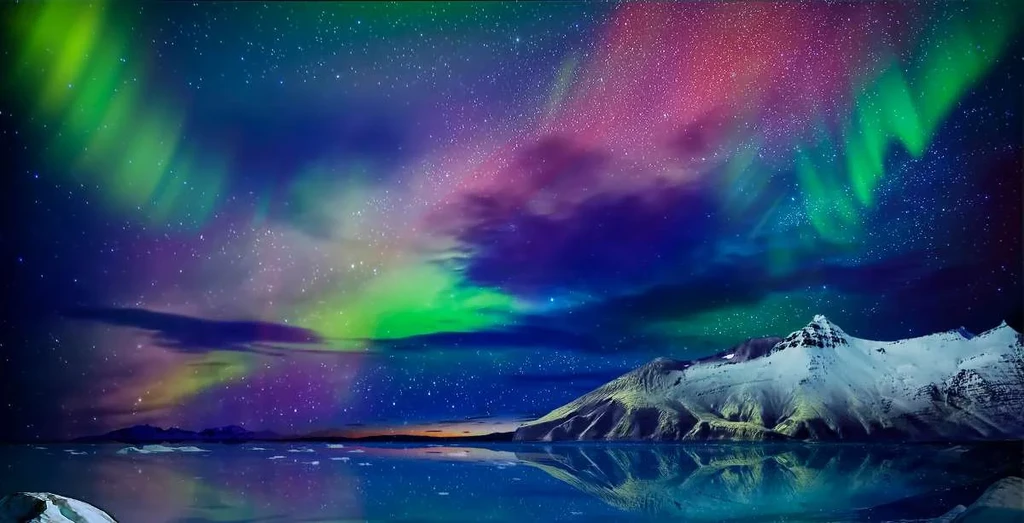
Cool Spots
The Northern Lights in Iceland are a cool site to see, but it gets even better in the best setting. If you go to the Jökulsarlon in the Vatnajökull National Park, for example, you will experience the Northern Lights being mirrored in the many floating icebergs and in the icy cold water. Kirkjufell, on the Snaefellsnes Peninsula, is another great example, where the iconic mountain silhouette can be seen touching the lights.
Mývatn in the northern part of Iceland is known as the Northern Lights capital of Iceland, and rightly so. The area is quite remote, without any light pollution from nearby cities and towns. Here you can also enjoy the Northern Lights in Iceland from one of the nearby hot springs. This is also one of the black sand beaches in Iceland, like Reynisfjara. Standing on a completely black beach and seeing the Northern Lights in Iceland is a majestic feeling.
This is where to stay in Iceland to see the Northern Lights if you want to have the full experience for an extended period.
The Countryside
Getting away from the man-made lights is always preferable when you are hunting the Northern Lights in Iceland. The Icelandic countryside is scarcely populated and has very little light pollution. So, it is the perfect place to stay for a night or two if you want to have a good shot at seeing the lights. Check out our full guide to camping in Iceland for the best sites in the countryside.
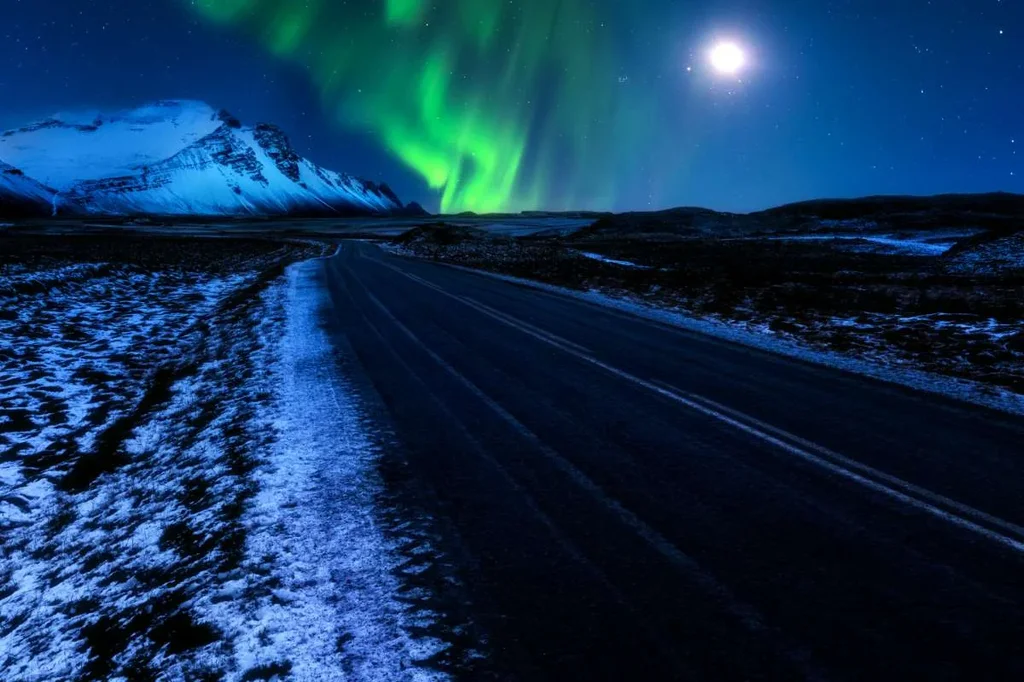
Driving
If you don’t mind driving at night in some questionable road conditions, then you will most likely be fine with simply driving to wherever the Northern Lights are. The upside of driving to catch the Northern Lights is that you are free to stop whenever you hit the spot. This is usually on empty roads away from civilization, so make sure to put your warning lights on for other drivers. Just leave the headlights off.
When Can You See the Northern Lights in Iceland?
You have a camera with a full battery and an empty memory card, the expectations are high, and you are ready to go out there and catch the Northern Lights in Iceland. But when should you go? When is the best time to see the Northern Lights in Iceland?
The Iceland Northern Lights season stretches from the late fall to the early spring. If you want to see the Northern Lights in Iceland during the summer, you will need expensive and scientific-grade gear, so we suggest keeping to the darker months.
What’s the Best Month to See the Northern Lights in Iceland?
You will be having a chance to see the Northern Lights when it’s cold and the nights go from very short to very long. The monthly weather and temperatures will mostly be cold and wet, so make sure to pack your bags accordingly.
December is possibly the best month to see the Northern Lights in Iceland, as it is in the dead of winter around the winter solstice. This will occur either on the 21st or 22nd of December, making it a great period to experience the Icelandic Christmas too! You will need to spend a couple of days and nights in the country to maximize your chances of catching the Northern Lights in Iceland.
If you plan a trip anywhere between October and March, you should have enough dark night hours to see it. However, if you stay further to the north in a more rural area, your Iceland Northern Lights season will be longer.
How Long Do the Northern Lights Last in Iceland?
Unfortunately, there is no specific answer to this question. Depending on what the solar wind looks like, you will get auroras that last for anything from a couple of short minutes to an entire night. This makes the whole hunt for Northern Lights in Iceland extra exciting, since you don’t really know how or whether you’re going to miss it or not.
Long, cold, and cloud-free nights will improve your chances of getting a long and impressive shot at the Northern Lights in Iceland.
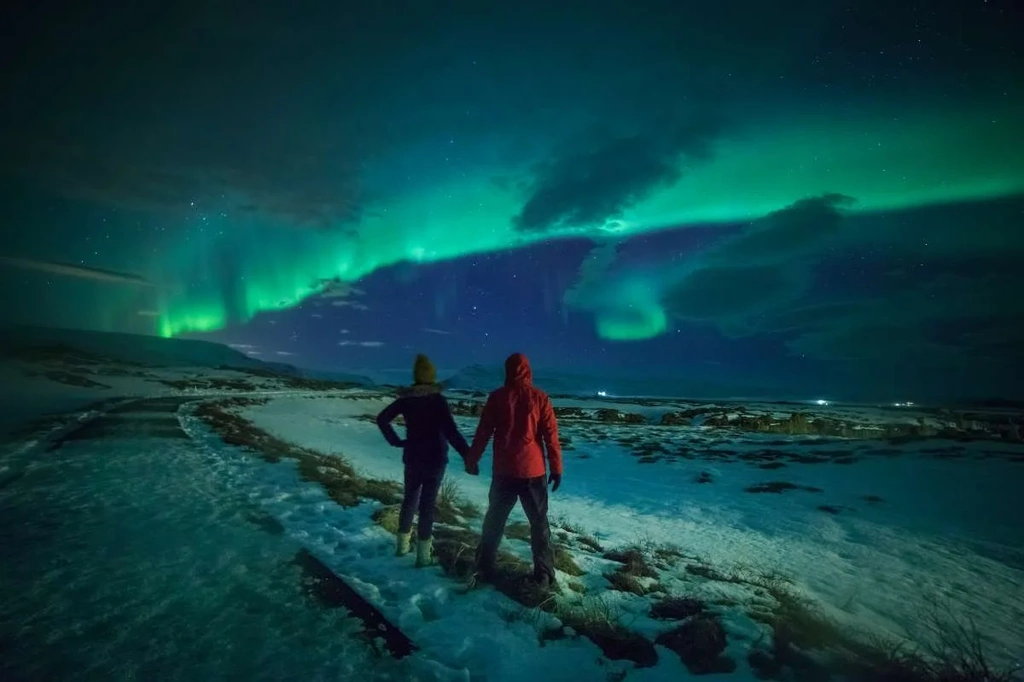
Capturing the Northern Lights
Have you ever looked up at the moon and thought, “Wow, this would be so cool to catch in a picture!”? Then, when you aim the camera at the target and fire off a couple of shots, it just comes out as a white circle in the night sky, without any of the amazing details you wanted.
To avoid this, we will give you some tips on how to photograph the Northern Lights in Iceland. See the tips below:
- Quality camera – Whether it is your high-performing phone camera or a state-of-the-art professional camera, it will need to meet a certain standard to be able to capture the Aurora Borealis.
- ISO setting – Balancing ISO, aperture, and shutter speed is key to getting your best shot.
- Lens – A wide lens will in general work better for photographing the Northern Lights in Iceland.
- Shutter speed – To ensure that you get all the colors in your picture, we would recommend a long shutter speed. If you have the right gear and have your settings tuned in, a shorter shutter speed will give you really crisp images.
- Aperture – A wide aperture is recommended. Keep it as close to the width of your lens as possible.
- Camera stand – Unless you are a qualified surgeon with hands that can keep completely still in cold temperatures, we suggest you get a camera stand. Anything from a simple gorilla stand to a high-quality professional tripod will do the trick. Your main objective is to keep the camera still for a very long time.
Balancing ISO, aperture, and shutter speed is key to getting the quality shot you want. If you are a professional night sky photographer, you will probably be able to figure out the best settings for your camera. If not, follow the tips above and don't miss our guide to photography in Iceland to find out everything you need to know to become your friends' favorite landscape photographer.
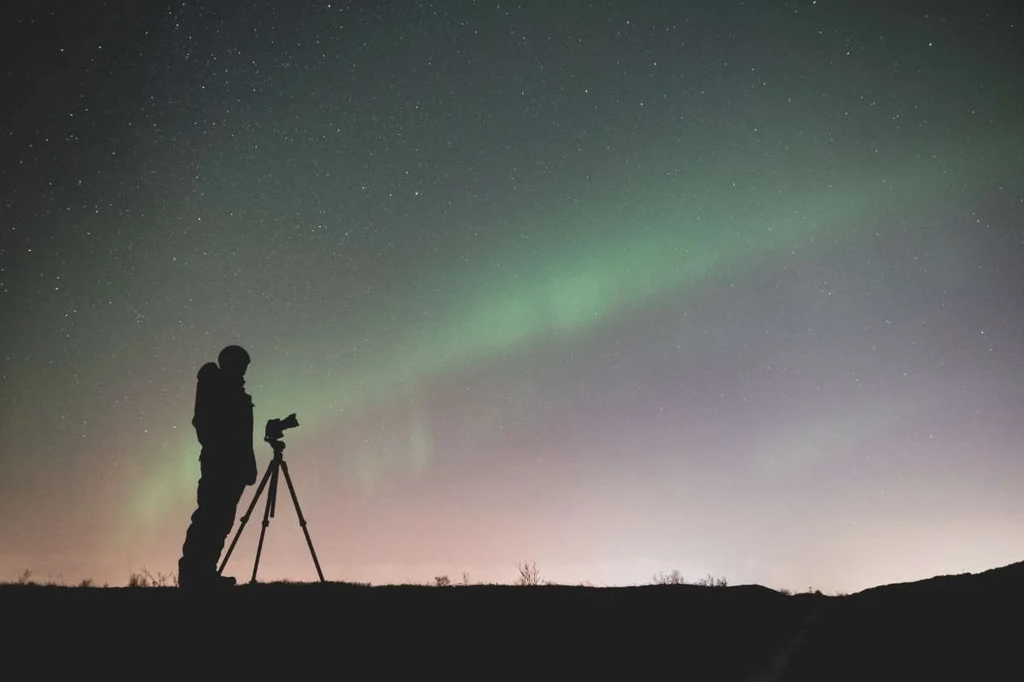
Northern Lights Tours in Iceland
If you’re not up for chasing the Northern Lights in Iceland by yourself, you can easily book a Northern lights tour to get what you want. You can pick tours that are just a few hours long with a bus transfer from Reykjavík, or make it a week-long adventure and explore large parts of Iceland at the same time. See below for some examples of tours you can enjoy on your hunt for the Northern Lights in Iceland.
Northern Lights Bus Tour from Reykjavík
Reykjavík boasts the most Northern Lights bus tours in the country. A bus trip will take a couple of hours and will be a very convenient option if you’re staying in the capital and just want to have an experience.
Northern Lights Boat Tours
Even though the best time to visit Iceland for this purpose is in the winter, there are still boat tours available. Combining a Northern Lights hunt in Iceland with a boat tour is the best idea if you’re looking for a whale-watching combination. Most of these tours will offer some whale-watching and end things off with a shining spectacle. Húsavík is a clear favorite for these kinds of trips, and Akureyri and Reykjavík are also viable options.
Multi-Day Tours
Whenever you choose to go on a multi-day tour to catch the Northern Lights in Iceland, you will often do that as part of a trip around Golden Circle, Ring Road, the south coast, the Westfjords, or the Diamond Circle. Transport and accommodation will be handled by your tour guide, and they will make sure that you can get to all the sights you want to see along the road.
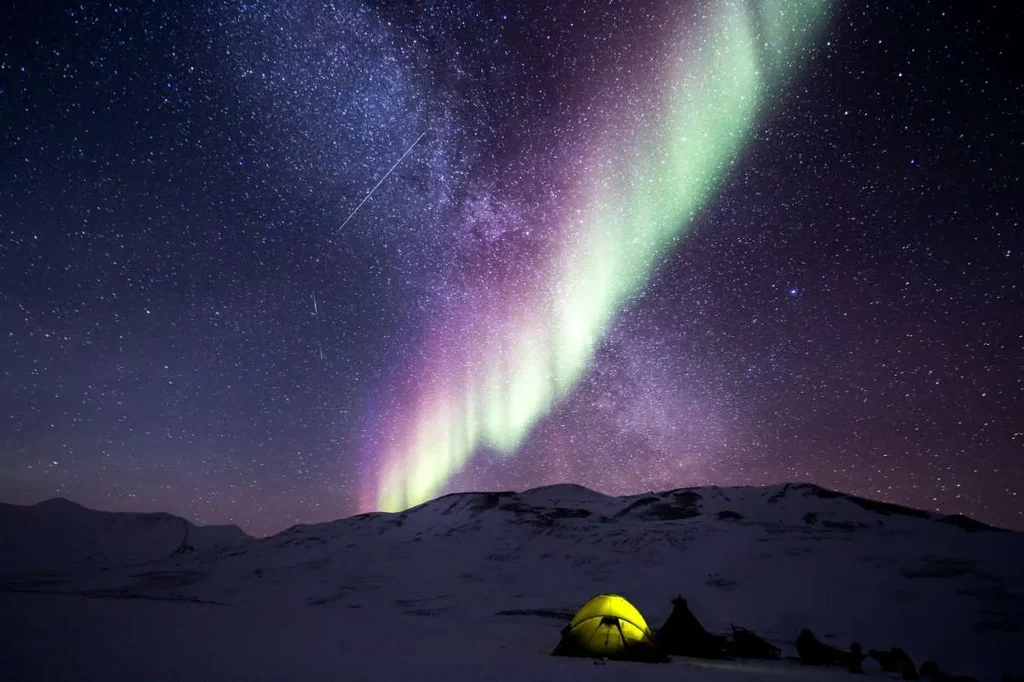
Get Hunting!
So, there you have it. The shiny guide to the Northern Lights in Iceland, with everything you need to catch this amazing phenomenon. There is no Northern Lights hunt without a reliable car, so check out which rental car in Iceland suits you the best and catch those Northern Lights!





